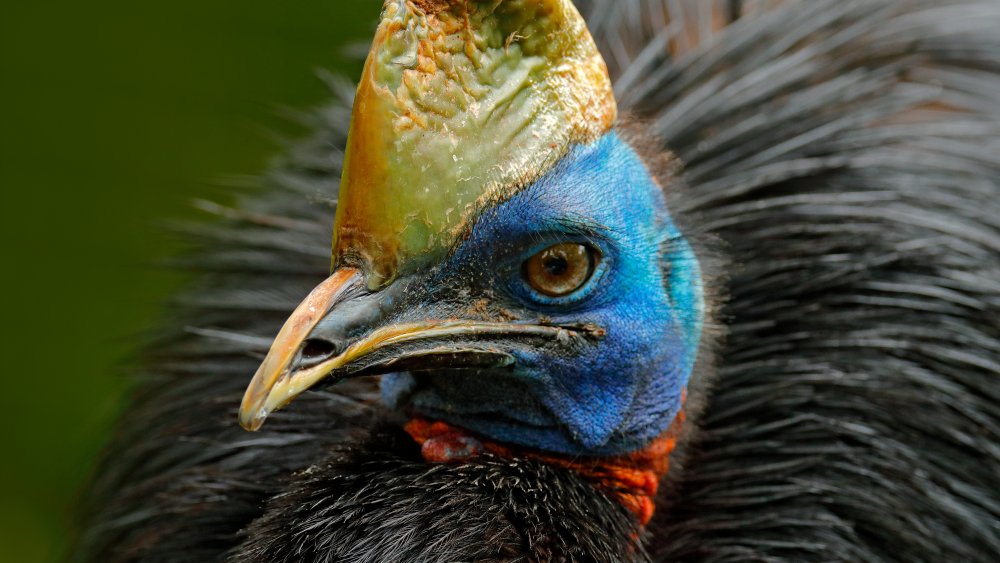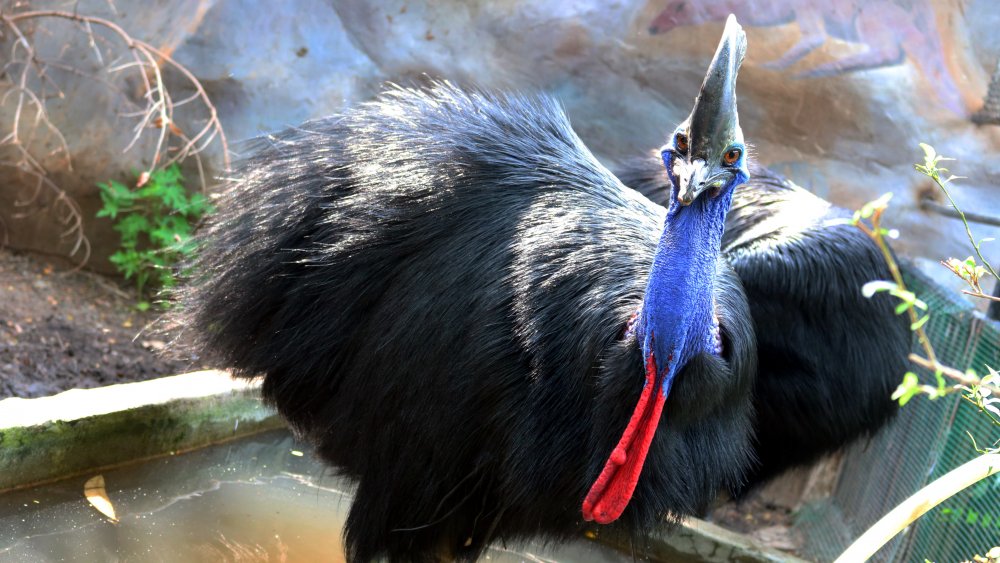The Most Dangerous Bird To Humans
Birds are so pleasant. They sing lovely songs, they have beautiful plumage, and some of them can even talk. Also, some of them have four inch claws and weigh 160 pounds, and are also ugly. Sorry, they're adorable, in a hideous sort of way.
Meet the cassowary, considered by Guinness World Records to be "the world's most dangerous bird." Cassowaries are closely related to the extinct terror bird, which has a fairly self-explanatory name. They are second only to ostriches in terms of weight, and although ostriches can be dangerous, too, cassowaries make them look like parakeets by comparison.
According to CBS News, a cassowary in Florida killed its human owner in April of 2019. Why? Because the man fell down. Yes, to a cassowary, falling down is a capital offense.
Are cassowaries that bad really?
The cassowary kills with its legs, and just to give you an idea about how powerful those legs are, it can also use them to run up to 31 miles per hour and jump seven feet into the air. It kills by kicking its legs forward and downward at its victim, though it may also jump on top of the person, head butt or peck. Most injuries are lacerations, puncture wounds, or fractures.
The good news is that you're not likely to encounter a cassowary unless you visit New Guinea or Australia... of course Australia. In New Guinea, the birds are sometimes used for food, so they may naturally view humans as a threat. Or maybe they're just sadistic and they kind of get a thrill out of attacking humans.
According to Scientific American, cassowaries have been known to attack people who get too close to their nests, chicks, or feeding grounds, which is understandable. But they also attack people who are jogging, people who are walking, or people who aren't giving them any food. Yes, in some places a few humans made the incredibly stupid decision to start feeding cassowaries, and now the cassowaries will punish anyone who doesn't give them food by trying to kill them.
To be fair, though, cassowaries are naturally wary of humans and aren't likely to attack unless provoked. The ones you have to worry about are the ones that are acclimated to human beings, but just to be safe, maybe avoid jogging or walking anywhere within 1,000 miles of Australia or New Guinea.

